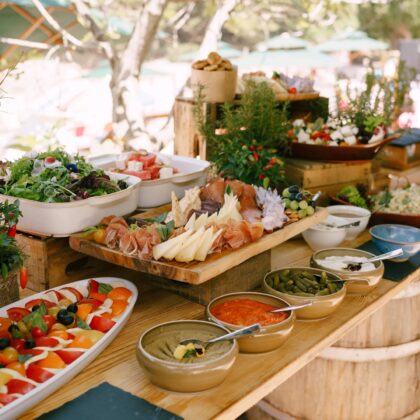Eating out doesn’t have to mean breaking your healthy habits.
Restaurants can be found on every street in Hong Kong, so understandably it can be challenging to avoid eating out, especially when you live or work in an area where restaurants and ready-to-eat foods are so available. While eating out on a regular basis can have an adverse impact on your health, you can take charge by paying attention to what you plan to order and how much you eat. The next time you head to your favourite on-the-go or dine-in resto, follow these nine dietitian-approved tips to help you make healthier food choices while eating out…
Read more: Give Your Immune System a Boost with These Nutrients

Take a good look at the menu
Before you cave into your cravings, take a good look at the menu. How is your favourite menu item prepared? Healthier cooking methods include steamed, broiled, baked, roasted and grilled. Food that is deep-fried, fried, breaded or food that includes stuffing are typically higher in calories and fat (sadly!).
More vegetables (and pay a little extra if you need to)
According to the Behavioural Risk Factor Survey that was conducted by Hong Kong’s Department of Health, only 20.5% of the surveyed participants between ages 18 and 64 years old consume five or more servings of vegetables and fruits on a daily basis. This is astoundingly low as the World Health Organization recommends all adults eat at least five servings of vegetables and fruits a day to prevent chronic diseases such as obesity, diabetes, heart disease and cancer.
Vegetables and fruits are nutrient powerhouses, so including them as part of meals and snacks is strongly encouraged. Unfortunately, when you are eating out, vegetables and fruits are typically not presented in large portions. If you are motivated in making healthier food choices, you may wish to pay a little extra by ordering a side order of vegetables. On the other hand, if you can’t justify paying the extra, you can always ask for extra vegetables in your burger, wrap or pizza. Alternatively, substitute your French fries with a leafy green salad for a change. Whichever way you choose to include more vegetables, you’ll be better off in the long run.
Read more: Nutritionists Have Found that These Foods Can Help Reduce Anxiety
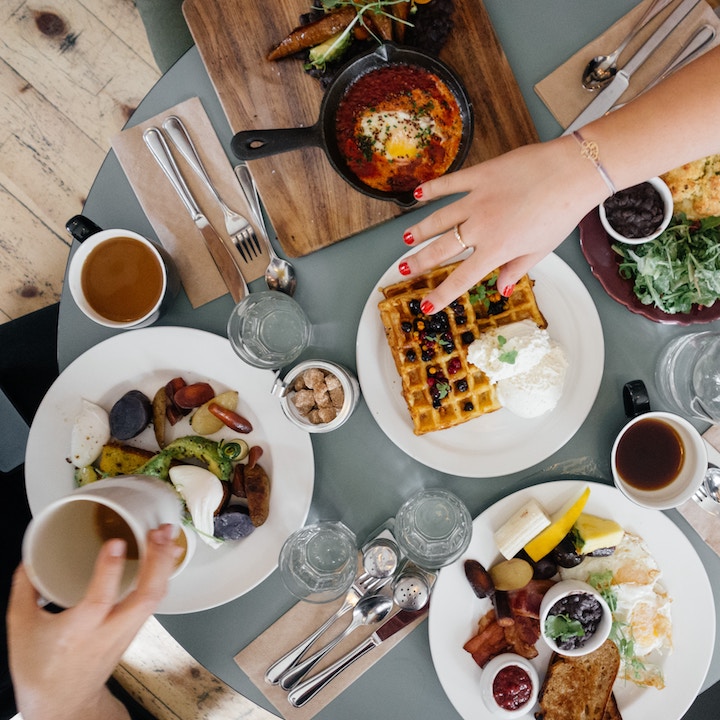
Whole grains as your carbs
Aside from having more greens, ordering menu items that include whole grains is another way to increase your dietary fibre intake. Fibre does not only make you feel full, it also helps with slowing down digestion by preventing sudden spikes of to your blood sugar. If you are trying to lose weight or maintain a healthy body weight, fibre is one of the key ingredients to your regimen. Furthermore, whole grains are good sources of B vitamins, vitamin E and minerals which are all important for growth and repair.
When eating out, you can easily identify whole grains on the menu. Amaranth, barley, buckwheat, barley, bulgur wheat, brown rice, millet, spelt, wild rice, whole oats or oatmeal, and quinoa are examples of whole grains. To start, challenge yourself to have whole grains as part of one dine out meal. It may take you sometime to adapt to the taste and texture of whole grains if you’re not used to them, but the more you eat, the more you will get used to the texture, and the more your body will thank you for the health benefits.
Easy on the salt please!
Salt is typically added to foods that are made outside of the home. You can control your salt intake by making requests to your server, such as asking for the menu item to be cooked with half the salt, or without salt or monosodium glutamate (MSG), a common ingredient in cooking. If this request can’t be granted, another option is to split the portion of food with someone in your dining party to decrease your salt intake (and have a protein shake or light salad beforehand).
Some foods are also loaded with salt. These foods include smoked, processed and pickled meats and vegetables, such as cured meats, ham, pickles, olives, kimchi and sauerkraut. Order these items less often. If they are offered as side dishes, like kimchi at Korean restaurants, have a bite or two only, avoid them entirely or ask for alternatives if they are available.
Read more: Can’t Lose Weight? Hormones Could be the Culprit!

Sauces on the side
You can also cut down your salt intake by asking for sauces and gravies to be served on the side so you can control how much you add to your food. Typical condiments such as soy sauce, teriyaki sauce, oyster sauce, tempura sauce, barbecue sauce, black bean sauce, chili sauce, ketchup, mustard, relish and some salad dressings are hidden sources of salt. Instead of drowning your food with sauces and dressings, you can use lemon and pepper to flavour.
The flavour profile of some foods, such as sushi, may not go hand in hand with lemon and pepper. In this case, you can ask the server if a light version of soy sauce, which is lower in salt, is available. Cuisines like hot pot is also typically accompanied by a large selection of dipping sauces to flavour foods. Instead of using satay sauce and bean curd sauce, you can make your own dipping sauce by mixing green onions, ginger, dice onions, chili pieces with vinegar. Like typical hot pot sauces, the natural flavours of these ingredients will please your palette.
Read more: These are the Healthiest Travel Snacks, According to a Registered Dietitian
Water with your meals
The calories from sweetened beverages can add up quickly, especially when you are not paying attention to how much you are drinking, such as when you are hungry or when you are enjoying your company while you are out eating and drinking. If you are looking into shedding a few pounds or maintaining your weight, have water. Water with lemon, fruit-infused water or even sparkling water can be acceptable accompaniments to your meal. If you plan to have an alcoholic beverage, try not have more than one to two drinks per day.
Read more: What Nutritionists Are Actually Eating for Gut Health
Watch your portions
The portion size of your food is just as important as how you choose your items on the menu. An easy way to eat mindfully is to request for half portions. Many eateries now offer such option to meet the needs of health conscious customers, but if this isn’t possible at your go-to dine out location, share the item with your dining party or pack any leftovers home and save it for the next meal. If you feel that’s not enough to keep you full, snacking on nuts, fruit or dried fruit beforehand is a good way to make sure you don’t go in and order everything you like the look of, starving. Sometimes our eyes can be bigger than our stomachs!
Read more: Gluten-Free Dining: Celiac-Safe Restaurants and Cafés in Hong Kong
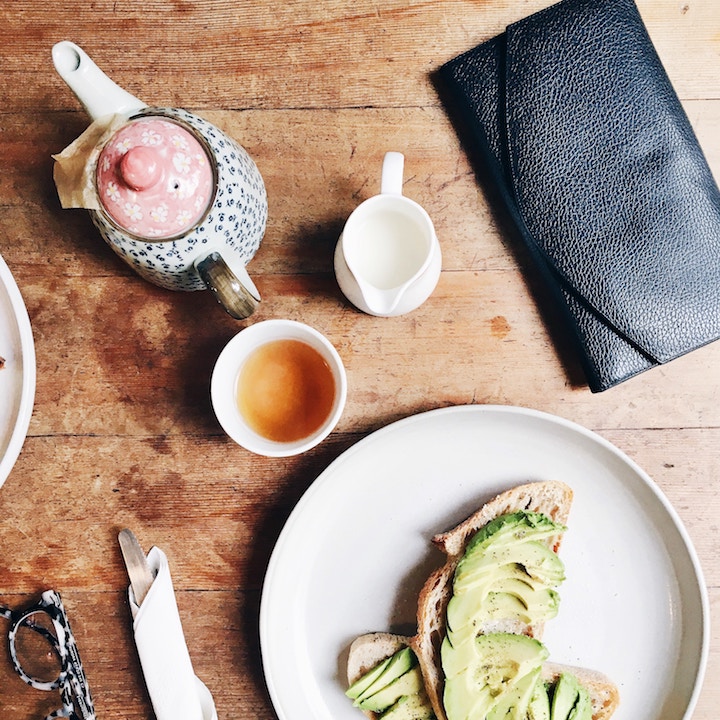
Forget about super-sizing deals
Some restaurants offer bottomless side orders and fountain drinks while others may offer a deal on larger portion of side orders and beverages. You may be tempted to pay a little extra or simply want to order multiple side orders for the sake of taking advantage of the deal, but this is an easy way to pile up on extra calories, fat, sugar and salt. Don’t fall into the trap. Let your rational mind guide you to eat mindfully.
Share your dessert
Having a sweet tooth but not wanting to overeat? Share the dessert with your friends. This is one of the ways to manage your calories while satisfying your cravings!
Read more: Why I Tried to Eliminate Sugar from my Diet… and Failed!
Bottom line
Taking charge of your health does not mean restricting yourself to the point where your meal is no longer enjoyable. An occasional indulgence is perfectly okay! If you eat out at least once a day, however, you may wish to have a game plan for your meals to avoid overconsumption of unnecessary calories, fat, salt and sugar.
Editor’s Note: This post was originally published 20 March 2018, and was updated on 6 March, 2019.





 Eat & Drink
Eat & Drink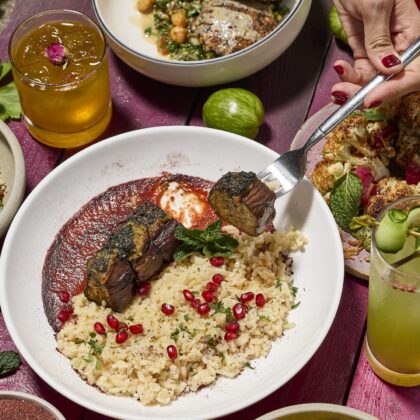


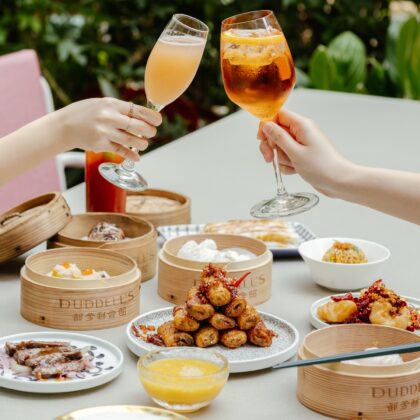
 Travel
Travel



 Style
Style


 Beauty
Beauty



 Health & Wellness
Health & Wellness



 Home & Decor
Home & Decor


 Lifestyle
Lifestyle
 Weddings
Weddings
